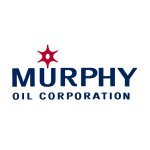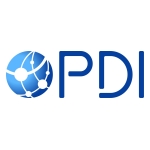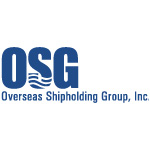HOUSTON--(BUSINESS WIRE)--Murphy Oil Corporation (NYSE: MUR) today announced its financial and operating results for the second quarter ended June 30, 2020, including a net loss attributable to Murphy of $317 million, or $2.06 net loss per diluted share. Adjusted net loss, which excludes discontinued operations and other one-off items, was $110 million, or $0.71 net loss per diluted share.

Unless otherwise noted, the financial and operating highlights and metrics discussed in this commentary exclude noncontrolling interest. 1
Significant items include:
-
Produced 168 thousand barrels of oil equivalent per day, including 58 percent or 98 thousand barrels of oil per day
-
Improved average lease operating expenses by 22 percent from the first quarter 2020 to less than $9 per barrel of oil equivalent in the second quarter, or approximately $7 per barrel of oil equivalent excluding workover expenses
-
Received $109 million of cash crude oil hedge settlements for the quarter
-
Lowered expected full year G&A by approximately 40 percent to a range of $130 million to $140 million compared to full year 2019 including the impact of the previously announced office closures, restructuring and a 30 percent office headcount reduction
-
Reduced the full year 2020 capital expenditure budget an additional $40 million, to a range of $680 million to $720 million, or a more than 50 percent reduction from the original 2020 guidance
-
Initiated crude oil hedge positions for 2021, resulting in a total of 15 thousand barrels of oil per day hedged at an average price of $42.93 per barrel
SECOND QUARTER 2020 FINANCIAL RESULTS
The company recorded a net loss, attributable to Murphy, of $317 million, or $2.06 net loss per diluted share, for the second quarter 2020. Adjusted net loss, which excludes both the results of discontinued operations and certain other items that affect comparability of results between periods, was $110 million, or $0.71 net loss per diluted share for the same period. The adjusted loss from continuing operations excludes the following after-tax items: a $146 million non-cash mark-to-market loss on crude oil derivative contracts, a $32 million charge for restructuring expenses, a $16 million non-cash asset impairment charge, and a $12 million non-cash mark-to-market loss on liabilities associated with future contingent consideration. Details for second quarter results can be found in the attached schedules.
Adjusted earnings before interest, taxes, depreciation and amortization (EBITDA) from continuing operations attributable to Murphy was $125 million, or $8 per barrel of oil equivalent (BOE) sold. Adjusted earnings before interest, tax, depreciation, amortization and exploration expenses (EBITDAX) from continuing operations attributable to Murphy was $154 million, or $10 per BOE sold. Details for second quarter adjusted EBITDA and EBITDAX reconciliations can be found in the attached schedules.
Second quarter production averaged 168 thousand barrels of oil equivalent per day (MBOEPD) with 58 percent oil and 65 percent liquids. Volumes were negatively impacted by a total of 17.5 MBOEPD for the second quarter, of which approximately 16 MBOEPD were the result of shut-ins due to market prices as previously disclosed, in addition to nearly 1.6 MBOEPD as the result of Tropical Storm Cristobal in the Gulf of Mexico. Production volumes from the shut-in wells came back online in June. Details for second quarter production can be found in the attached schedules.
“The second quarter was difficult not only for our industry, but also our company. As we endured the economic fallout from the global pandemic and the unprecedented oil price collapse, we made the decision to shut in wells, primarily at a single offshore facility. Absent these shut-ins, our assets performed very well and production volumes would have been essentially flat with first quarter 2020. I am proud of our team’s ability to manage uptime and performance despite the unique challenges presented by recent events. Our field employees continue to follow strict safety protocols, and have kept COVID-19 absent from our operations,” stated Roger W. Jenkins, President and Chief Executive Officer of Murphy Oil Corporation.
PROTECTING THE COMPANY’S FINANCIAL POSITION
As of June 30, 2020, Murphy had approximately $1.6 billion of liquidity, comprised of $1.4 billion undrawn under the $1.6 billion senior unsecured credit facility and approximately $146 million of cash and cash equivalents.
At the end of second quarter 2020, Murphy had outstanding debt of $2.8 billion in long-term, fixed-rate notes and $170 million drawn under its senior unsecured credit facility. The fixed-rate notes had a weighted average maturity of 7.3 years and a weighted average coupon of 5.9 percent. Overall, approximately 80 percent of total fixed-rate notes are due in 2024 or later.
COMMODITY HEDGE POSITIONS MITIGATE CASH FLOW VOLATILITY
The company employs commodity derivative instruments to manage certain risks associated with commodity price volatility and underpin capital spending associated with certain assets. Subsequent to quarter-end, Murphy opportunistically layered on hedges to protect cash flow with the execution of WTI fixed prices swaps, resulting in a total 15 MBOPD hedged for full year 2021 at an average price of $42.93 per barrel.
Details for the current hedge positions can be found in the attached schedules.
FURTHER REDUCING CAPTIAL EXPENDITURES
Murphy has continued to rework its remaining 2020 capital plans given ongoing macroeconomic conditions and low commodity prices. As a result, the company’s full year budget has been reduced a further $40 million at the midpoint, to a range of $680 million to $720 million, or more than a 50 percent reduction from original guidance. Note that CAPEX guidance excludes Gulf of Mexico noncontrolling interest (NCI) and King’s Quay floating production system (FPS) construction spending. For second quarter 2020, Murphy accrued a total $174 million of CAPEX, including approximately $33 million for the King’s Quay FPS which, along with previous King’s Quay expenditures, will be reimbursed at close of the transaction, which is anticipated to occur in the third quarter.
“This quarter, we made meaningful reductions to right-size our cost structure, capital spending and quarterly dividend. With our capital program significantly weighted towards the first half of 2020, this sets the company up to generate free cash flow, after the dividend, for the remainder of the year based on current strip prices. As I look ahead, we are in the early stages of benefiting from our new low-cost structure with the reduction in force and office closures finalized just last month, and we look forward to executing our business plans in a streamlined setting going forward,” Jenkins added.
THIRD QUARTER 2020 PRODUCTION GUIDANCE
With the revised capital budget, Murphy anticipates production volumes of approximately 153 MBOEPD to 163 MBOEPD for the third quarter. This guidance range is primarily impacted by two major factors – assumed storm downtime of nearly 5 MBOEPD, and repairs at Delta House facility totaling 8 MBOEPD – as well as planned maintenance at a non-operated Gulf of Mexico field, resulting in 1,200 BOEPD of third quarter downtime.
OPERATIONS SUMMARY
North American Onshore
The North American onshore business produced approximately 90 MBOEPD in the second quarter.
Eagle Ford Shale – Production averaged 38 MBOEPD with 74 percent oil volumes in the second quarter. As planned, early in the quarter Murphy brought online 11 operated wells in Karnes, comprised of nine new wells and two refracs. The five non-operated Karnes wells scheduled to come online were delayed to the third quarter. An additional three non-operated wells are scheduled to come online, for a total of eight non-operated wells to come online in the third quarter. Drilling and completions costs have improved considerably since 2019, with the average cost reduced to approximately $5 million per well for the first half of 2020. No further operated activity is planned for 2020.
Tupper Montney – Natural gas production averaged 237 MMCFD for the quarter. No activity occurred in the second quarter, and none is planned for the remainder of 2020.
Kaybob Duvernay – Second quarter production averaged nearly 11 MBOEPD. One well was brought online during the quarter as planned, with production from the remaining four new wells deferred to the third quarter due to market pricing. No drilling and completions activity is planned for the remainder of 2020.
Placid Montney – Produced 2 MBOEPD in the second quarter through Murphy’s non-operated position. As planned, six non-operated wells were brought online in April, and shut in for May and June due to low commodity prices. Production from these new wells resumed in July.
Global Offshore
The offshore business produced 78 MBOEPD for the second quarter, comprised of 80 percent oil. This excludes production from discontinued operations and noncontrolling interest. Gulf of Mexico production in the quarter averaged 72 MBOEPD, consisting of 78 percent oil. Canada offshore production averaged 6 MBOEPD, comprised of 100 percent oil.
Gulf of Mexico – The second well in the Front Runner rig program, A7 (Green Canyon 338), was completed and brought online during the second quarter. As previously disclosed, the planned third well in the program has been postponed as part of Murphy’s revised capital budget due to ongoing low commodity prices.
Also in the quarter, the Dalmatian DC 134 #2 (De Soto Canyon 134) and Cascade 4 (Walker Ridge 250) well workovers were completed and the wells returned to production for total net workover costs of approximately $20 million, representing nearly 15 percent of total operating expenses for the quarter.
Murphy’s operating partner in Kodiak #3 (Mississippi Canyon 727) drilled the well to total depth in the second quarter, with completion delayed until prices recover. Additionally, the non-operated St. Malo waterflood project continues to progress, and the producer well PN005 (Walker Ridge 678) was spud during the quarter.
The King’s Quay FPS transaction documentation is progressing, with the logistical effects of COVID-19 delaying closing, which is now targeted for the third quarter. During the second quarter, construction on the FPS with Hyundai Heavy Industries achieved the significant milestone of 1 million man-hours with zero Lost Time Incidents.
Canada Offshore – As previously announced, non-operated Terra Nova is expected to remain offline for the year.
EXPLORATION
Gulf of Mexico – The non-operated Mt. Ouray well (Green Canyon 767) was drilled in the second quarter for $7.8 million cost net to Murphy as 20 percent working interest owner. The well has been classified as a dry hole.
CONFERENCE CALL AND WEBCAST SCHEDULED FOR AUGUST 6, 2020
Murphy will host a conference call to discuss second quarter 2020 financial and operating results on Thursday, August 6, 2020, at 9:00 a.m. EDT. The call can be accessed either via the Internet through the Investor Relations section of Murphy Oil’s website at http://ir.murphyoilcorp.com or via the telephone by dialing toll free 1-888-886-7786, reservation number 90315402.
FINANCIAL DATA
Summary financial data and operating statistics for second quarter 2020, with comparisons to the same period from the previous year, are contained in the following schedules. Additionally, a schedule indicating the impacts of items affecting comparability of results between periods, a reconciliation of EBITDA and EBITDAX between periods, as well as guidance for the third quarter 2020, are also included.
1 In accordance with GAAP, Murphy reports the 100 percent interest, including a 20 percent noncontrolling interest (NCI), in its subsidiary, MP Gulf of Mexico, LLC (MP GOM). The GAAP financials include the NCI portion of revenue, costs, assets and liabilities and cash flows. Unless otherwise noted, the financial and operating highlights and metrics discussed in this news release, but not the accompanying schedules, exclude the NCI, thereby representing only the amounts attributable to Murphy.
ABOUT MURPHY OIL CORPORATION
As an independent oil and natural gas exploration and production company, Murphy Oil Corporation believes in providing energy that empowers people by doing right always, staying with it and thinking beyond possible. It challenges the norm, taps into its strong legacy and uses its foresight and financial discipline to deliver inspired energy solutions. Murphy sees a future where it is an industry leader who is positively impacting lives for the next 100 years and beyond. Additional information can be found on the company’s website at www.murphyoilcorp.com.
FORWARD-LOOKING STATEMENTS
This news release contains forward-looking statements within the meaning of the Private Securities Litigation Reform Act of 1995. Forward-looking statements are generally identified through the inclusion of words such as “aim”, “anticipate”, “believe”, “drive”, “estimate”, “expect”, “expressed confidence”, “forecast”, “future”, “goal”, “guidance”, “intend”, “may”, “objective”, “outlook”, “plan”, “position”, “potential”, “project”, “seek”, “should”, “strategy”, “target”, “will” or variations of such words and other similar expressions. These statements, which express management’s current views concerning future events or results, are subject to inherent risks and uncertainties. Factors that could cause one or more of these future events or results not to occur as implied by any forward-looking statement include, but are not limited to: macro conditions in the oil and gas industry, including supply/demand levels, actions taken by major oil exporters and the resulting impacts on commodity prices; increased volatility or deterioration in the success rate of our exploration programs or in our ability to maintain production rates and replace reserves; reduced customer demand for our products due to environmental, regulatory, technological or other reasons; adverse foreign exchange movements; political and regulatory instability in the markets where we do business; the impact on our operations or market of health pandemics such as COVID-19 and related government responses; other natural hazards impacting our operations or markets; any other deterioration in our business, markets or prospects; any failure to obtain necessary regulatory approvals; any inability to service or refinance our outstanding debt or to access debt markets at acceptable prices; or adverse developments in the U.S. or global capital markets, credit markets or economies in general. For further discussion of factors that could cause one or more of these future events or results not to occur as implied by any forward-looking statement, see “Risk Factors” in our most recent Annual Report on Form 10-K filed with the U.S. Securities and Exchange Commission (“SEC”) and any subsequent Quarterly Report on Form 10-Q or Current Report on Form 8-K that we file, available from the SEC’s website and from Murphy Oil Corporation’s website at http://ir.murphyoilcorp.com. Murphy Oil Corporation undertakes no duty to publicly update or revise any forward-looking statements.
NON-GAAP FINANCIAL MEASURES
This news release contains certain non-GAAP financial measures that management believes are useful tools for internal use and the investment community in evaluating Murphy Oil Corporation’s overall financial performance. These non-GAAP financial measures are broadly used to value and compare companies in the crude oil and natural gas industry. Not all companies define these measures in the same way. In addition, these non-GAAP financial measures are not a substitute for financial measures prepared in accordance with GAAP and should therefore be considered only as supplemental to such GAAP financial measures. Please see the attached schedules for reconciliations of the differences between the non-GAAP financial measures used in this news release and the most directly comparable GAAP financial measures.
MURPHY OIL CORPORATION
SUMMARIZED CONSOLIDATED STATEMENTS OF OPERATIONS (unaudited)
|
|
|
Three Months Ended
June 30,
|
|
Six Months Ended
June 30,
|
(Thousands of dollars, except per share amounts)
|
2020
|
|
2019
|
|
2020
|
|
2019
|
Revenues and other income
|
|
|
|
|
|
|
|
Revenue from sales to customers
|
$
|
285,745
|
|
|
680,436
|
|
|
886,303
|
|
|
1,309,790
|
|
(Loss) gain on crude contracts
|
(75,880
|
)
|
|
57,916
|
|
|
324,792
|
|
|
57,916
|
|
Gain on sale of assets and other income
|
1,677
|
|
|
5,598
|
|
|
4,175
|
|
|
6,790
|
|
Total revenues and other income
|
211,542
|
|
|
743,950
|
|
|
1,215,270
|
|
|
1,374,496
|
|
Costs and expenses
|
|
|
|
|
|
|
|
Lease operating expenses
|
144,644
|
|
|
137,132
|
|
|
353,792
|
|
|
268,828
|
|
Severance and ad valorem taxes
|
6,442
|
|
|
13,072
|
|
|
15,864
|
|
|
23,169
|
|
Transportation, gathering and processing
|
41,090
|
|
|
34,901
|
|
|
85,457
|
|
|
74,443
|
|
Exploration expenses, including undeveloped lease amortization
|
29,468
|
|
|
30,674
|
|
|
49,594
|
|
|
63,212
|
|
Selling and general expenses
|
39,100
|
|
|
57,532
|
|
|
75,872
|
|
|
120,892
|
|
Restructuring expenses
|
41,397
|
|
|
—
|
|
|
41,397
|
|
|
—
|
|
Depreciation, depletion and amortization
|
231,446
|
|
|
264,302
|
|
|
537,548
|
|
|
493,708
|
|
Accretion of asset retirement obligations
|
10,469
|
|
|
9,897
|
|
|
20,435
|
|
|
19,237
|
|
Impairment of assets
|
19,616
|
|
|
—
|
|
|
987,146
|
|
|
—
|
|
Other (benefit) expense
|
22,007
|
|
|
25,437
|
|
|
(23,181
|
)
|
|
55,442
|
|
Total costs and expenses
|
585,679
|
|
|
572,947
|
|
|
2,143,924
|
|
|
1,118,931
|
|
Operating (loss) income from continuing operations
|
(374,137
|
)
|
|
171,003
|
|
|
(928,654
|
)
|
|
255,565
|
|
Other income (loss)
|
|
|
|
|
|
|
|
Interest and other income (loss)
|
(5,171
|
)
|
|
(8,968
|
)
|
|
(4,930
|
)
|
|
(13,716
|
)
|
Interest expense, net
|
(38,598
|
)
|
|
(54,096
|
)
|
|
(79,695
|
)
|
|
(100,165
|
)
|
Total other loss
|
(43,769
|
)
|
|
(63,064
|
)
|
|
(84,625
|
)
|
|
(113,881
|
)
|
(Loss) income from continuing operations before income taxes
|
(417,906
|
)
|
|
107,939
|
|
|
(1,013,279
|
)
|
|
141,684
|
|
Income tax (benefit) expense
|
(94,773
|
)
|
|
9,115
|
|
|
(186,306
|
)
|
|
19,937
|
|
(Loss) income from continuing operations
|
(323,133
|
)
|
|
98,824
|
|
|
(826,973
|
)
|
|
121,747
|
|
(Loss) income from discontinued operations, net of income taxes
|
(1,267
|
)
|
|
24,418
|
|
|
(6,129
|
)
|
|
74,264
|
|
Net (loss) income including noncontrolling interest
|
(324,400
|
)
|
|
123,242
|
|
|
(833,102
|
)
|
|
196,011
|
|
Less: Net (loss) income attributable to noncontrolling interest
|
(7,216
|
)
|
|
30,970
|
|
|
(99,814
|
)
|
|
63,557
|
|
NET (LOSS) INCOME ATTRIBUTABLE TO MURPHY
|
$
|
(317,184
|
)
|
|
92,272
|
|
|
(733,288
|
)
|
|
132,454
|
|
|
|
|
|
|
|
|
|
(LOSS) INCOME PER COMMON SHARE – BASIC
|
|
|
|
|
|
|
|
Continuing operations
|
$
|
(2.05
|
)
|
|
0.40
|
|
|
(4.74
|
)
|
|
0.34
|
|
Discontinued operations
|
(0.01
|
)
|
|
0.15
|
|
|
(0.04
|
)
|
|
0.44
|
|
Net (loss) income
|
$
|
(2.06
|
)
|
|
0.55
|
|
|
(4.78
|
)
|
|
0.78
|
|
|
|
|
|
|
|
|
|
(LOSS) INCOME PER COMMON SHARE – DILUTED
|
|
|
|
|
|
|
|
Continuing operations
|
$
|
(2.05
|
)
|
|
0.40
|
|
|
(4.74
|
)
|
|
0.34
|
|
Discontinued operations
|
(0.01
|
)
|
|
0.14
|
|
|
(0.04
|
)
|
|
0.43
|
|
Net (loss) income
|
$
|
(2.06
|
)
|
|
0.54
|
|
|
(4.78
|
)
|
|
0.77
|
|
Cash dividends per Common share
|
0.125
|
|
|
0.25
|
|
|
0.375
|
|
|
0.50
|
|
Average Common shares outstanding (thousands)
|
|
|
|
|
|
|
|
Basic
|
153,581
|
|
|
168,538
|
|
|
153,429
|
|
|
170,556
|
|
Diluted
|
153,581
|
|
|
169,272
|
|
|
153,429
|
|
|
171,433
|
|
MURPHY OIL CORPORATION
CONSOLIDATED STATEMENTS OF CASH FLOWS (unaudited)
|
|
|
Three Months Ended
June 30,
|
|
Six Months Ended
June 30,
|
(Thousands of dollars)
|
2020
|
|
2019
|
|
2020
|
|
2019
|
Operating Activities
|
|
|
|
|
|
|
|
Net (loss) income including noncontrolling interest
|
$
|
(324,400
|
)
|
|
123,242
|
|
|
(833,102
|
)
|
|
196,011
|
|
Adjustments to reconcile net (loss) income to net cash (required) provided by continuing operations activities:
|
|
|
|
|
|
|
|
Loss (income) from discontinued operations
|
1,267
|
|
|
(24,418
|
)
|
|
6,129
|
|
|
(74,264
|
)
|
Depreciation, depletion and amortization
|
231,446
|
|
|
264,302
|
|
|
537,548
|
|
|
493,708
|
|
Previously suspended exploration costs
|
7,580
|
|
|
(350
|
)
|
|
7,677
|
|
|
12,901
|
|
Amortization of undeveloped leases
|
7,292
|
|
|
7,105
|
|
|
14,770
|
|
|
15,150
|
|
Accretion of asset retirement obligations
|
10,469
|
|
|
9,897
|
|
|
20,435
|
|
|
19,237
|
|
Impairment of assets
|
19,616
|
|
|
—
|
|
|
987,146
|
|
|
—
|
|
Deferred income tax (benefit) expense
|
(86,529
|
)
|
|
2,412
|
|
|
(167,902
|
)
|
|
18,001
|
|
Mark to market (gain) loss on contingent consideration
|
15,622
|
|
|
15,360
|
|
|
(43,529
|
)
|
|
28,890
|
|
Mark to market (gain) loss of crude contracts
|
184,454
|
|
|
(50,831
|
)
|
|
(173,848
|
)
|
|
(50,831
|
)
|
Noncash restructuring expense
|
17,565
|
|
|
—
|
|
|
17,565
|
|
|
—
|
|
Long-term non-cash compensation
|
12,955
|
|
|
22,367
|
|
|
22,760
|
|
|
44,755
|
|
Net decrease (increase) in noncash operating working capital
|
(106,492
|
)
|
|
93,139
|
|
|
1,335
|
|
|
(5,366
|
)
|
Other operating activities, net
|
(14,123
|
)
|
|
(23,979
|
)
|
|
(27,605
|
)
|
|
(42,761
|
)
|
Net cash (required) provided by continuing operations activities
|
(23,278
|
)
|
|
438,234
|
|
|
369,379
|
|
|
655,431
|
|
Investing Activities
|
|
|
|
|
|
|
|
Property additions and dry hole costs
|
(182,767
|
)
|
|
(374,831
|
)
|
|
(537,601
|
)
|
|
(645,169
|
)
|
Property additions for King's Quay FPS
|
(30,339
|
)
|
|
—
|
|
|
(51,635
|
)
|
|
—
|
|
Acquisition of oil and gas properties
|
—
|
|
|
(1,226,261
|
)
|
|
—
|
|
|
(1,226,261
|
)
|
Proceeds from sales of property, plant and equipment
|
—
|
|
|
16,816
|
|
|
—
|
|
|
16,816
|
|
Net cash required by investing activities
|
(213,106
|
)
|
|
(1,584,276
|
)
|
|
(589,236
|
)
|
|
(1,854,614
|
)
|
Financing Activities
|
|
|
|
|
|
|
|
Borrowings on revolving credit facility
|
200,000
|
|
|
1,075,000
|
|
|
370,000
|
|
|
1,075,000
|
|
Repayment of revolving credit facility
|
(200,000
|
)
|
|
—
|
|
|
(200,000
|
)
|
|
—
|
|
Cash dividends paid
|
(19,198
|
)
|
|
(42,105
|
)
|
|
(57,590
|
)
|
|
(85,503
|
)
|
Distributions to noncontrolling interest
|
(1
|
)
|
|
(50,339
|
)
|
|
(32,400
|
)
|
|
(68,776
|
)
|
Early retirement of debt
|
(8,655
|
)
|
|
—
|
|
|
(12,225
|
)
|
|
—
|
|
Withholding tax on stock-based incentive awards
|
(153
|
)
|
|
—
|
|
|
(7,247
|
)
|
|
(6,991
|
)
|
Debt issuance, net of cost
|
—
|
|
|
—
|
|
|
(613
|
)
|
|
—
|
|
Proceeds from term loan and other loans
|
371
|
|
|
500,000
|
|
|
371
|
|
|
500,000
|
|
Capital lease obligation payments
|
(168
|
)
|
|
(175
|
)
|
|
(336
|
)
|
|
(335
|
)
|
Repurchase of common stock
|
—
|
|
|
(299,924
|
)
|
|
—
|
|
|
(299,924
|
)
|
Net cash (required) provided by financing activities
|
(27,804
|
)
|
|
1,182,457
|
|
|
59,960
|
|
|
1,113,471
|
|
Cash Flows from Discontinued Operations 1
|
|
|
|
|
|
|
|
Operating activities
|
—
|
|
|
(1,197
|
)
|
|
(1,202
|
)
|
|
122,272
|
|
Investing activities
|
—
|
|
|
(23,360
|
)
|
|
4,494
|
|
|
(49,798
|
)
|
Financing activities
|
—
|
|
|
(2,367
|
)
|
|
—
|
|
|
(4,914
|
)
|
Net cash provided by discontinued operations
|
—
|
|
|
(26,924
|
)
|
|
3,292
|
|
|
67,560
|
|
Cash transferred from discontinued operations to continuing operations
|
—
|
|
|
2,485
|
|
|
—
|
|
|
48,565
|
|
Effect of exchange rate changes on cash and cash equivalents
|
1,940
|
|
|
863
|
|
|
(1,358
|
)
|
|
3,268
|
|
Net increase (decrease) in cash and cash equivalents
|
(262,248
|
)
|
|
39,763
|
|
|
(161,255
|
)
|
|
(33,879
|
)
|
Cash and cash equivalents at beginning of period
|
407,753
|
|
|
286,281
|
|
|
306,760
|
|
|
359,923
|
|
Cash and cash equivalents at end of period
|
$
|
145,505
|
|
|
326,044
|
|
|
145,505
|
|
|
326,044
|
|
|
|
|
|
|
|
|
|
|
|
|
|
|
1 Net cash provided by discontinued operations is not part of the cash flow reconciliation.
|
MURPHY OIL CORPORATION
SCHEDULE OF ADJUSTED INCOME (LOSS)
(unaudited)
|
|
|
Three Months Ended
June 30,
|
|
Six Months Ended
June 30,
|
(Millions of dollars, except per share amounts)
|
2020
|
|
2019
|
|
2020
|
|
2019
|
Net (loss) income attributable to Murphy (GAAP)
|
$
|
(317.1
|
)
|
|
92.3
|
|
|
(733.2
|
)
|
|
132.5
|
|
Discontinued operations loss (income)
|
1.2
|
|
|
(24.5
|
)
|
|
6.1
|
|
|
(74.3
|
)
|
(Loss) income from continuing operations
|
(315.9
|
)
|
|
67.8
|
|
|
(727.1
|
)
|
|
58.2
|
|
Adjustments (after tax):
|
|
|
|
|
|
|
|
Impairment of assets
|
15.6
|
|
|
—
|
|
|
708.3
|
|
|
—
|
|
Mark-to-market (gain) loss on crude oil derivative contracts
|
145.8
|
|
|
(40.2
|
)
|
|
(137.3
|
)
|
|
(40.2
|
)
|
Mark-to-market (gain) loss on contingent consideration
|
12.3
|
|
|
12.1
|
|
|
(34.4
|
)
|
|
22.8
|
|
Restructuring expenses
|
31.6
|
|
|
—
|
|
|
31.6
|
|
|
—
|
|
Unutilized rig charges
|
3.5
|
|
|
—
|
|
|
6.3
|
|
|
—
|
|
(Gain) loss on extinguishment of debt
|
(4.2
|
)
|
|
—
|
|
|
(4.2
|
)
|
|
—
|
|
Inventory loss
|
—
|
|
|
—
|
|
|
3.8
|
|
|
—
|
|
Foreign exchange (gains) losses
|
1.5
|
|
|
2.7
|
|
|
(2.5
|
)
|
|
5.1
|
|
Business development transaction costs
|
—
|
|
|
6.2
|
|
|
—
|
|
|
16.0
|
|
Write-off of previously suspended exploration wells
|
—
|
|
|
—
|
|
|
—
|
|
|
13.2
|
|
Impact of tax reform
|
—
|
|
|
(13.0
|
)
|
|
—
|
|
|
(13.0
|
)
|
Total adjustments after taxes
|
206.1
|
|
|
(32.2
|
)
|
|
571.6
|
|
|
3.9
|
|
Adjusted (loss) income from continuing operations attributable to Murphy
|
$
|
(109.8
|
)
|
|
35.6
|
|
|
(155.5
|
)
|
|
62.1
|
|
|
|
|
|
|
|
|
|
Adjusted (loss) income from continuing operations per average diluted share
|
$
|
(0.71
|
)
|
|
0.21
|
|
|
(1.01
|
)
|
|
0.36
|
|
Contacts
Investor Contacts:
Kelly Whitley, This email address is being protected from spambots. You need JavaScript enabled to view it., 281-675-9107
Megan Larson, This email address is being protected from spambots. You need JavaScript enabled to view it., 281-675-9470
Read full story here 



















